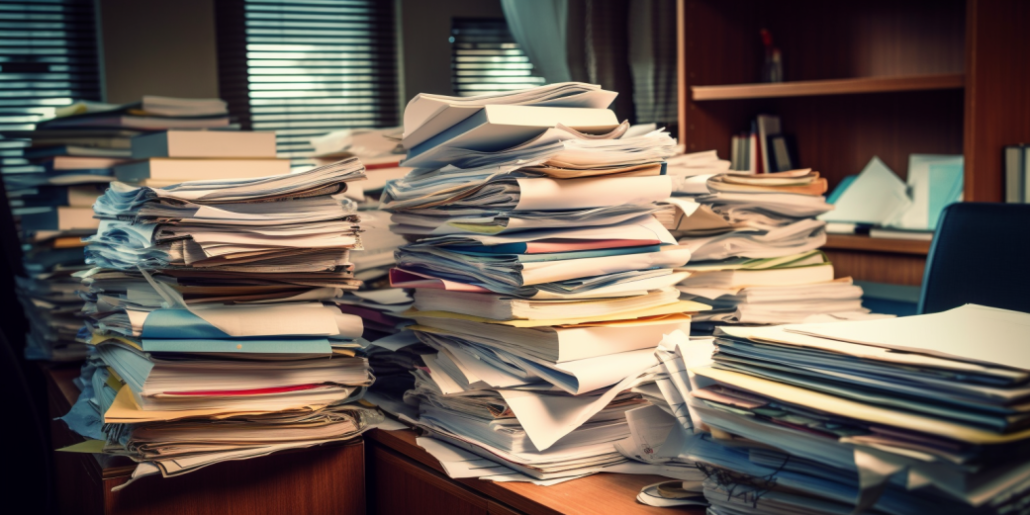Common Area Maintenance ( CAM) Reconciliation: What is it and Why is it Important?
What is a CAA Reconciliation?
CAM charges are payments made by occupants of commercial properties to cover the expenses associated with the upkeep and maintenance of shared areas. These “common areas” include facilities that are accessible and beneficial to all tenants, such as elevators, lobbies, restrooms, parking lots, and more. The distribution of these charges among tenants is determined in the lease agreement and is usually based on the proportionate share of the total leasable space.
At the conclusion of each fiscal year, landlords conduct a CAM reconciliation process to ensure that the estimated CAM charges collected from tenants align with the actual expenses incurred. If the estimated fees exceed the actual costs, the landlord may be obligated to refund the excess amount to the tenants. On the other hand, if the expenses surpass the estimated fees, the landlord may need to issue additional bills to the tenants.
Why CAM Reconciliation is Important?
CAM reconciliation is critical in commercial real estate accounting for a variety of reasons:
Transparency
Transparency plays a pivotal role in property management, providing landlords and tenants with a comprehensive and accurate breakdown of the true costs associated with the upkeep of shared spaces. This commitment to transparency is advantageous for both parties, as it guarantees that the fees imposed are equitable, sensible, and supported by valid reasons. To foster transparency, various tools and approaches can be employed, including:
- Itemized Expense Statements: Landlords can provide itemized statements to tenants, outlining the specific expenses incurred for maintaining common areas. These statements can include categories like cleaning services, repairs and maintenance, utilities, landscaping, and security;
- Regular Reporting: Property managers can generate regular reports summarizing the expenses associated with common area maintenance. These reports can be shared with landlords and tenants to keep them informed about the financial aspects of property management;
- Budget Planning: Transparent property management involves developing a comprehensive budget that clearly outlines the anticipated expenses for common area maintenance. This budget can be shared with landlords and tenants, allowing them to understand how their money is being allocated and spent;
- Online Portals and Tools: Utilizing online portals and property management software can facilitate transparency by providing access to real-time financial data. Landlords and tenants can log in to these platforms to review expense reports, invoices, and other financial records.
Accuracy
Accuracy in expense reconciliation is paramount to ensure that tenants are charged correctly and only pay their rightful share. Several measures can be implemented to achieve accuracy in property management expenses, including:
- Regular Auditing: Conducting regular audits of financial records and expense reports helps identify any discrepancies or errors. Auditing ensures that expenses are accurately recorded and allocated, reducing the chances of overcharging or undercharging tenants;
- Expense Reconciliation: The reconciliation process involves comparing the actual expenses incurred with the charges billed to the tenants. Any differences, such as overages or underages, are adjusted to ensure accuracy. This step guarantees that tenants pay only what they owe based on their proportionate share of the expenses;
- Clear Documentation: Maintaining clear and detailed documentation of expenses is essential for accuracy. This includes keeping receipts, invoices, and other supporting documents that demonstrate the legitimacy of the charges. Accurate documentation enables property managers to justify expenses and resolve any disputes that may arise;
- Communication and Transparency: Open communication between landlords, property managers, and tenants is crucial for accuracy. Clear explanations of the reconciliation process and the specific charges incurred help tenants understand their obligations and prevent misunderstandings. Transparency in sharing expense breakdowns and calculations further enhances accuracy and builds trust.
Relationships
Building and maintaining a positive landlord-tenant relationship is crucial in property management, and proper CAM (Common Area Maintenance) reconciliation plays a significant role in achieving this. Transparent and accurate reconciliation of CAM expenses minimizes disputes and cultivates trust and goodwill between landlords and tenants. Here are some key factors that contribute to fostering positive relationships:
- Transparency: By providing clear and detailed insights into CAM expenses, landlords demonstrate transparency and build trust with tenants. This includes sharing itemized expense statements, reports, and budgets that outline the specific charges and allocations for common area maintenance;
- Accuracy: Accurate reconciliation ensures that tenants are billed correctly, avoiding overcharges or undercharges. By maintaining accuracy in expense documentation and conducting regular audits, property managers can instill confidence in tenants, showing that their financial obligations are handled with care and precision;
- Effective Communication: Open and effective communication is vital in maintaining positive relationships. Property managers should proactively communicate with tenants, addressing any questions or concerns related to CAM expenses. By promptly responding to queries and providing clarifications, property managers can foster transparency and understanding;
- Dispute Resolution: In the event of disputes or disagreements regarding CAM expenses, a fair and efficient dispute resolution process is essential. Property managers should have protocols in place to address disputes promptly, ensuring that they are resolved in a respectful and equitable manner. This demonstrates a commitment to maintaining positive relationships and finding mutually beneficial solutions.
Regulation Compliance
Compliance with local regulations is of utmost importance in property management, and a robust CAM (Common Area Maintenance) reconciliation process plays a vital role in meeting regulatory requirements. Here are key considerations for ensuring regulation compliance:
- Understanding Local Regulations: Property managers need to be familiar with the specific regulations and requirements imposed by local authorities regarding CAM expenses. This includes knowing the relevant laws, ordinances, and guidelines that dictate how expenses should be reported, managed, and allocated;
- Accurate Expense Recording: To comply with regulations, it is essential to maintain accurate and detailed records of CAM expenses. This includes keeping receipts, invoices, and other supporting documents that demonstrate the legitimacy of the charges. Accurate documentation enables property managers to provide evidence of compliance when required;
- Transparent Reporting: Many jurisdictions mandate transparent reporting of CAM expenses to tenants or relevant authorities. Property managers should ensure that expense statements are comprehensive, itemized, and easily understandable. Clear reporting helps demonstrate compliance and facilitates auditing, if necessary;
- Periodic Audits: Regular audits of CAM expenses can help identify any discrepancies and ensure compliance with regulations. Property managers should conduct internal audits or engage external auditors to review the accuracy and compliance of their CAM reconciliation process. Audits provide assurance that the financial practices align with regulatory requirements.
The CAM Reconciliation Process

The CAM reconciliation process involves several key steps to ensure accurate and fair allocation of expenses. These steps are as follows:
| Step | Description |
|---|---|
| Collect All Records | Begin by gathering all relevant records, including invoices, receipts, and any other documentation pertaining to the expenses incurred for maintaining common areas throughout the year. |
| Categorize the Expenses | Categorize the expenses into appropriate categories as defined in the lease agreement. Common categories may include janitorial services, security, landscaping, utilities, repairs and maintenance, and administrative costs. |
| Calculate Total Costs | Calculate the total amount spent in each expense category and determine the overall total expenses for maintaining the common areas. |
| Allocate the Expenses | Allocate the expenses to each tenant based on the agreed-upon allocation method. This is typically determined by the ratio of their leased space to the total leasable area in the property. |
| Compare With Collected Amounts | Compare the calculated CAM charges with the CAM charges already collected from each tenant during the specified period. |
| Issue Adjustments | Based on the comparison, make any necessary adjustments. If a tenant has overpaid, issue a refund or provide a credit towards future payments. Conversely, if a tenant has underpaid, issue an additional bill to reconcile the outstanding amount. |
Tables can be used to organize the expense categories, total costs, and allocation percentages for each tenant. Bullet lists effectively outline the sequential steps involved in the CAM reconciliation process.
Conclusion
CAM reconciliation is a key process in commercial real estate management and accounting. It ensures fairness, transparency, and accuracy, contributing to better landlord-tenant relationships and regulatory compliance. While the process can be complex and time-consuming, effective management and understanding can greatly simplify the task and make it a seamless part of the annual financial cycle.
FAQS
To perform a CAM reconciliation, you need to collect all records of expenses incurred in maintaining the common areas. After categorizing these costs, calculate the total expenses and distribute them among the tenants based on their proportion of the total leased space. Finally, compare the actual costs with the estimated CAM charges collected from each tenant, and make adjustments as necessary.
In accounting, especially in the context of commercial real estate, CAM refers to Common Area Maintenance. It pertains to the costs associated with maintaining the shared spaces in a commercial property, such as lobbies, elevators, parking lots, etc. These costs are typically passed on to tenants, and CAM reconciliation is the process of ensuring that the charges are fair and accurate.
As a title, CAM usually refers to a “Certified Apartment Manager”. It’s a professional designation earned by property managers who have demonstrated a high level of competency and ethical behavior in the management of residential properties.
CAM services refer to the maintenance services provided for the common areas of a commercial property. These services may include cleaning, security, landscaping, and other tasks necessary to keep the shared spaces in good condition. The costs for these services are typically passed on to the tenants as CAM charges.

